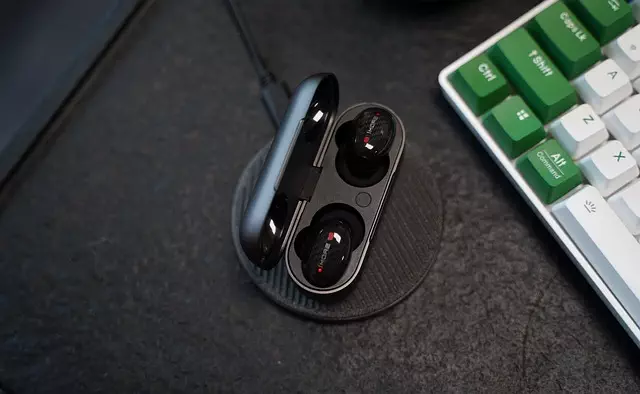Thigh fat, influenced by hormones, genetics, and lifestyle, is a complex body composition aspect. Effective Fat Reduction Solutions for thighs include exercise, non-invasive procedures like CoolSculpting, laser treatments, and lifestyle adjustments. Non-invasive technologies like laser, radiofrequency, and HIFU offer quick, safe results with minimal downtime. Targeted liposuction and laser therapy are advanced, pain-free methods for precise fat reduction. Holistic approaches, including exercise, diet, and recovery care, ensure sustainable results. Choosing the right Fat Reduction Solutions involves considering technology, safety, cost, and clinic expertise.
Thigh fat can be stubborn, but there are numerous effective fat reduction solutions available today. Understanding the anatomy of thigh fat and its underlying causes is the first step towards achieving a slimmer, more toned appearance. This comprehensive guide explores various thigh fat reduction methods, from traditional to cutting-edge technologies like targeted liposuction, laser therapy, and non-invasive treatments. Discover lifestyle changes that promote sustainable results and learn essential post-treatment care tips for optimal recovery.
Understanding Thigh Fat: Anatomy and Causes

Thigh fat, primarily located in the subcutaneous tissue, is a complex component of overall body composition. Comprehending its anatomical distribution and underlying causes is crucial when exploring effective fat reduction solutions. The thigh area contains a high density of adipose cells, which can be influenced by various factors. Hormones play a significant role in fat storage and distribution, with estrogen being particularly relevant for women, contributing to higher fat accumulation in the thighs.
Genetics also factor into where individuals tend to store fat, making some people more susceptible to thigh fat buildup. Lifestyle choices, including diet and exercise habits, significantly impact fat distribution. Sedentary behavior and a calorie-rich diet can lead to increased thigh fat. Understanding these influences empowers individuals to make informed decisions regarding their health, choosing activities and dietary adjustments that support fat reduction solutions tailored to their needs.
Common Thigh Fat Reduction Methods

Thigh fat reduction has become a popular request in the quest for achieving a slimmer, more contoured silhouette. Thankfully, there are several effective methods available to tackle excess thigh fat. One commonly explored approach is exercise, with targeted workouts like squats, lunges, and leg presses designed to engage and tone the muscles while also reducing stubborn fat deposits.
Beyond physical activity, non-invasive fat reduction solutions have gained traction. These include technologies like CoolSculpting, which uses cryolipolysis to freeze and eliminate fat cells, and laser-based treatments that stimulate collagen production for a firmer appearance. Additionally, lifestyle adjustments such as adopting a balanced diet, staying hydrated, and maintaining adequate sleep play a significant role in supporting overall weight management and complementing these treatments.
Non-Invasive Treatments: A Gentle Approach

Non-invasive treatments offer a gentle and effective way to target stubborn fat in the thigh area without any incisions or recovery time. These modern solutions leverage advanced technologies like laser, radiofrequency, and high-intensity focused ultrasound (HIFU) to break down fat cells and stimulate collagen production. Unlike surgical procedures, non-invasive methods are often more affordable, accessible, and suitable for individuals with active lifestyles who want quick results without downtime.
One of the key benefits of these treatments is their ability to shape and contour problem areas while preserving surrounding skin tissue. They are designed to be comfortable and minimally disruptive, allowing patients to resume normal activities almost immediately after the procedure. Moreover, non-invasive fat reduction solutions have a proven track record in clinical trials, ensuring safety and efficacy for those seeking to achieve their desired thigh silhouette.
Targeted Liposuction: Precision for Better Results

Targeted liposuction is a fat reduction solution that utilizes advanced technology to sculpt and define specific areas, including the thighs. This minimally invasive procedure involves inserting small cannulas into targeted fat deposits, allowing for precise suction of unwanted fat cells. The result? Enhanced contouring and a more toned appearance.
Compared to traditional liposuction methods, targeted liposuction offers enhanced precision, ensuring that surrounding healthy tissues remain undisturbed. This level of accuracy leads to better results, reduced recovery time, and minimal scarring. It’s an excellent choice for individuals seeking fat reduction in specific areas, particularly the thighs, where stubborn fat can be challenging to eliminate through diet and exercise alone.
Laser Therapy: A New Dimension in Fat Reduction

Laser therapy emerges as a cutting-edge non-invasive fat reduction solution, offering a new dimension in the quest for toned thighs. This innovative approach utilizes concentrated light energy to break down fat cells, facilitating their natural elimination from the body. Unlike traditional methods that often involve incisions or injections, laser therapy is painless and does not disrupt the skin’s surface.
The procedure is simple: a specialized laser device emits gentle yet powerful pulses targeted at the adipose tissue. These pulses heat up the fat cells, causing them to release stored lipids into the bloodstream, where they are processed by the liver and eventually excreted. This modern technique has proven effective for reducing stubborn thigh fat, providing individuals with a safe and efficient alternative to surgical procedures.
Lifestyle Changes for Sustainable Results

Achieving sustainable fat reduction in the thighs goes beyond just external treatments; lifestyle modifications are key to long-term success. Incorporating regular cardiovascular exercise, such as brisk walking or cycling, into your routine helps burn calories and reduce overall body fat, including the thigh area. Strength training exercises targeting the leg muscles can also be beneficial, as stronger muscles support the joints and improve overall appearance.
Diet plays a crucial role in fat reduction; adopting a balanced, calorie-controlled eating plan is essential. Reducing intake of processed foods, sugary beverages, and unhealthy fats can significantly impact weight loss goals. Focus on incorporating more fruits, vegetables, lean proteins, and whole grains into your diet to nourish your body while supporting fat reduction solutions.
Post-Treatment Care and Recovery Tips

After undergoing any fat reduction solutions, such as those targeted at the thigh area, proper post-treatment care is essential for optimal results and a speedy recovery. It’s crucial to listen to your body and give it the rest and hydration it needs. This means getting ample sleep, staying well-hydrated, and avoiding strenuous activities for a period recommended by your healthcare provider.
Consider incorporating gentle exercises like walking or light stretching into your routine once the go-ahead is given. A balanced diet with reduced sugar intake can also aid in recovery and maintain the results achieved from the fat reduction treatments. Remember to consult your specialist for personalized tips based on the specific procedures performed, as different methods may have varying care requirements.
Choosing the Right Fat Reduction Solution: Factors to Consider

When considering thigh fat treatments, it’s paramount to select a fat reduction solution that aligns with your specific needs and goals. Several factors come into play here. First, understanding the technology behind each treatment is key. Different methods like laser, radiofrequency, or ultrasound target fat cells in unique ways, so choosing one suited to your body type and desired outcomes is essential.
Additionally, consider non-invasive versus invasive procedures. Non-surgical options are generally safer with less downtime but may require more frequent treatments. Invasive procedures offer quicker results but carry higher risks and recovery times. Cost, accessibility, and the expertise of the clinic or provider are also significant considerations in your decision-making process for effective fat reduction solutions.



